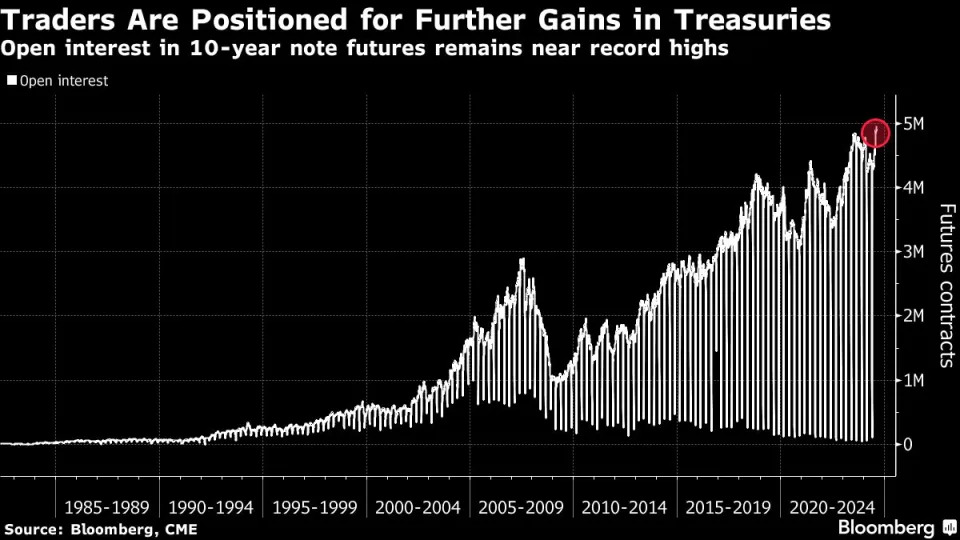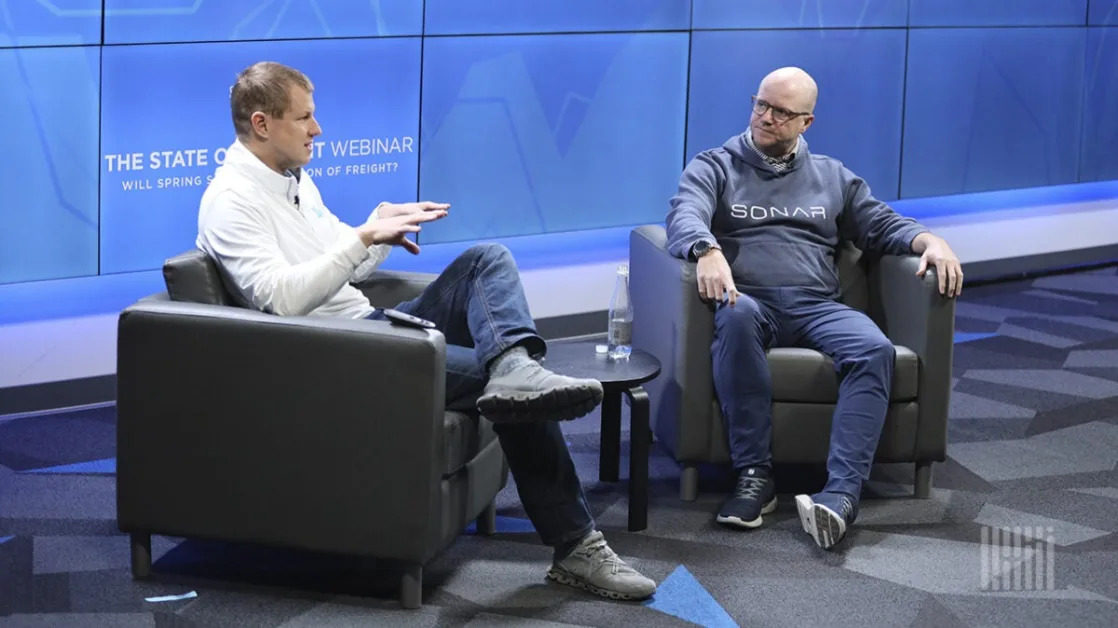NEW YORK (AP) — Former President Donald Trump suggested to business leaders Thursday that his plans to increase tariffs on foreign imports would solve seemingly unrelated challenges such as the rising cost of child care in the U.S.
The GOP presidential nominee promised to lead what he called a “national economic renaissance” by increasing tariffs, slashing regulations to boost energy production and drastically cutting government spending as well as corporate taxes for companies that produce in the U.S.
Trump was asked at his appearance before the Economic Club of New York about his plans to drive down child care costs to help more women join the workforce.
“Child care is child care, it’s something you have to have in this country. You have to have it," he said. Then, he said his plans to tax imports from foreign nations at higher levels would “take care” of such problems.
“We’re going to be taking in trillions of dollars, and as much as child care is talked about as being expensive, it’s — relatively speaking — not very expensive, compared to the kind of numbers we’ll be taking in,” he said.
Trump has embraced tariffs as he appeals to working-class voters who oppose free-trade deals and the outsourcing of factories and jobs. But in his speech Thursday and his economic plans as a whole, Trump has made a broader — to some, implausible — promise on tariffs: that they can raise trillions of dollars to fund his agenda without those costs being passed along to consumers in the form of higher prices.
His campaign attacks Democratic nominee Kamala Harris ’ proposals to increase corporate tax rates by saying they would ultimately be borne by workers in the form of fewer jobs and lower incomes. Yet taxes on foreign imports would have a similar effect with businesses and consumers having to absorb those costs in the form of higher prices.
The United States had $3.8 trillion worth of imports last year, according to the Bureau of Economic Analysis. Trump in the past has talked about universal tariffs of at least 10%, if not higher, though he has not spelled out details about how these taxes would be implemented.
Kimberly Clausing, an economist at the University of California, Los Angeles, has repeatedly warned in economic analyses about the likely damage to people’s finances from Trump’s tariffs. She noted that Trump wants tariffs to pay for everything, even though they can’t.
“I believe Trump has already spent this revenue, to pay for his tax cuts (which it doesn’t), or to perhaps end the income tax (which it cannot),” she said in an email. “It is unclear how there would be any revenues left over to fund child care.”
Trump was asked to talk about child care
Child care is unaffordable for many Americans and financially precarious for many day care operators and their employees. Democrats in Congress have long argued the child care industry is in crisis and requires a drastic increase in federal aid — and some Republicans have joined them. Trump pointed to his tariff ideas as well as efforts he announced to reduce what he described as “waste and fraud.”
“I want to stay with child care, but those numbers are small relative to the kind of economic numbers that I'm talking about, including growth, but growth also headed up by what the plan is that I just told you about,” he said.
Trump’s running mate JD Vance was also asked about proposals to lower day care costs earlier this week, and he suggested making it easier for families to keep the kids at home with a grandparent or another relative.
“Make it so that, maybe like grandma or grandpa wants to help out a little bit more,” he said. “If that happens, you relieve some of the pressure on all the resources that we are spending on day care.”
Vance also suggested training more people to work in day cares, and said some states required what he called “ridiculous certification that has nothing to do with taking care of kids."
Trump laid out a series of economic proposals
In his speech, Trump said he would immediately issue “a national emergency declaration” to achieve a massive increase in the domestic energy supply and eliminate 10 current regulations for every new regulation the government adopts. He said Tesla and SpaceX CEO Elon Musk has agreed to head a commission to perform a financial audit of the federal government that would save trillions of dollars.
“My plan will rapidly defeat inflation, quickly bring down prices and reignite explosive economic growth,” Trump claimed.
Trump has previously floated the idea of chopping the corporate tax rate to 15%, but on Thursday clarified that would be solely for companies that produce in the U.S. The corporate rate had been 35% when he became president in 2017, and he later signed a bill lowering it.
Harris calls for raising the corporate tax rate to 28% from 21%. Her policy proposals this week have been geared toward promoting more entrepreneurship, a bet that making it easier to start new companies will increase middle-class prosperity.
On Thursday, Trump attacked Harris’ proposals on banning price gouging and accused her of embracing Marxism and communism.
“She wants four more years to enforce the radical left agenda that poses a fundamental threat to the prosperity of every American family and America itself,” he said.
He also vowed to end what he called Harris’ “anti-energy crusade,” promising that energy prices would be cut in half, although energy prices are often driven by international fluctuations. He said an emergency declaration would help with rapid approvals for new drilling projects, pipelines, refineries, power plants and reactors, where local opposition is generally fierce.
And he also said he would ask Congress to pass legislation to ban the spending of taxpayer money on people who have entered the country illegally. He specifically said he would bar them from obtaining mortgages in California, targeting a bill passed in that state last week. Throughout his campaign, Trump has railed against the economic impact of the influx of migrants that have entered the country in recent years and their strain on some government services.
The Harris campaign issued a memo accusing Trump of wanting to hurt the middle class, arguing his ideas would expand the national debt and shrink economic growth and job creation.
“He wants our economy to serve billionaires and big corporations,” the campaign said in a statement.
Their dueling economic proposals are likely to be central to the upcoming presidential debate on Tuesday. Harris arrived Thursday in downtown Pittsburgh to devote the next several days to preparing for the debate. She intentionally picked a key part of the battleground state of Pennsylvania to hone her ideas ahead of their showdown.
Trump plans to rely heavily on tariffs
In June, the right-leaning Tax Foundation estimated that Trump’s proposed tariffs would amount to a $524 billion yearly tax hike that would shrink the economy and cost the equivalent of 684,000 jobs. After Trump floated tariffs as high as 20% in August, the Harris campaign seized on an analysis suggesting that figure would raise a typical family’s expenses by almost $4,000 annually.
The money raised by tariffs would not be enough to offset the cost of his various income tax cuts, including a plan to whittle the corporate rate to 15% from 21%. The Penn Wharton Budget Model put the price tag on that at $5.8 trillion over 10 years.
Economists have warned about Trump’s plans to impose tariffs that he says would return manufacturing jobs to the U.S. Some have said such taxes on imports could worsen inflation, though he is vowing to cut down costs. Inflation peaked in 2022 at 9.1% but has since eased to 2.9% as of last month.
“Some might say it’s economic nationalism. I call it common sense. I call it America First,” he said on Thursday.
___
Gomez Licon reported from Fort Lauderdale, Florida, and Boak reported from Pittsburgh. Associated Press writers Moriah Balingit and Amelia Thomson-DeVeaux in Washington contributed to this report.





